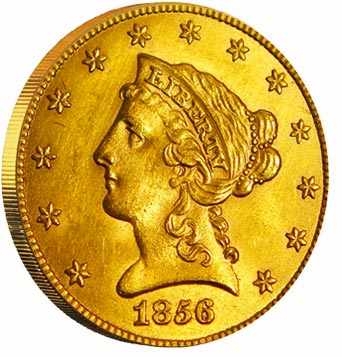- Gold $0.00 $0.00
- Silver $0.00 $0.00
- Platinum $0.00 $0.00
- Palladium $0.00 $0.00
Pre-1933 U.S. Gold Coins
Invest in American History
Buying Pre-1933 Gold Coins from the U.S. Gold Bureau is simple with a large inventory of Saint-Gaudens (1907-1933), Indian Head (1908-1929) & Liberty Head (1850-1907) gold coins. The U.S. Mint first issued gold coins in 1795. In 1933, President Franklin D. Roosevelt signed Executive Order 6102, which forbid the hoarding of gold coin, gold bullion, and gold certificates within the continental United States, citing "hoarding" gold as stifling economic growth and furthering the Great Depression.
Millions of American gold coins were returned to the U.S. Treasury, melted, and then cast into gold bars. The surviving vintage of pre-1933 U.S. gold coins have extremely low populations, making them among the most desirable gold coins among collectors and investors.


Saint-Gaudens (1907-1933)
The Saint-Gaudens Double Eagle was produced by the U.S. Mint from 1907 to 1933. The coin's name, derived from its designer, sculptor Augustus Saint-Gaudens was commissioned by President Theodore Roosevelt in 1904 to beautify American coinage. The coin is often considered to be the most beautiful of U.S. gold coins and features a standing Miss Liberty lighting the way to freedom by holding a torch as the dawn rises over the Capitol. The reverse is a majestic flying eagle with the twenty-dollar denomination.
The coins were met with controversy when originally released because the design lacked the words, "In God We Trust." An outraged Congress quickly ordered the motto to appear on the coin and coins minted after 1908 feature the slogan. The Saint-Gaudens gold coins are U.S. legal tender and are not medallions or other reproductions.
Indian Head (1908-1929)
The Indian Head gold coins were struck as both quarter eagle ($2.50) and half eagle ($5) and are the last of these denominations to be struck for circulation. The Indian Head remains the only circulated United States coins with recessed designs. The half eagle and quarter eagle are identical in design. The obverse depicts the head of a left-facing Native American man wearing a headdress. Featured on the reverse is an eagle standing on arrows, holding an olive branch.
World War I caused gold to disappear from circulation, preventing the quarter eagle from being struck from 1916-1924 and the half eagle from being struck from 1917-1928, making the Indian Head a piece of American history highly desirable amongst investors and collectors.
Liberty Head (1850-1907)
Liberty Head gold coins were struck in a dollar, quarter eagle ($2.50), half eagle ($5), eagle ($10), and double eagle ($20) denominations. Different versions were struck within some of the denominations which further the collectability and investment potential for these coins.
Despite being struck with various versions, the overall design of the Liberty Head coin remains the same. The obverse portrays a left-facing head of Liberty in a Greco-Roman style surrounded by thirteen stars representing the thirteen original states. Featured on the reverse is a heraldic eagle protecting a shield.



